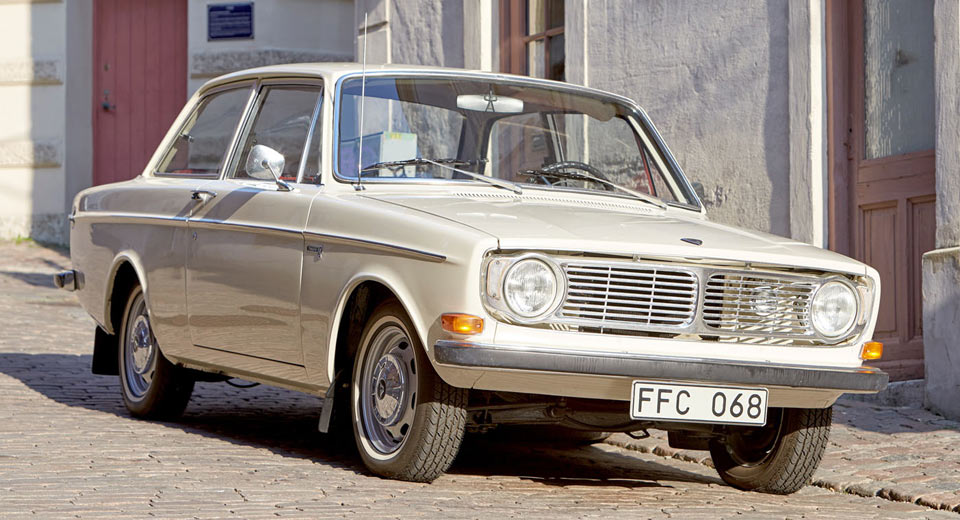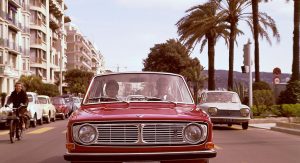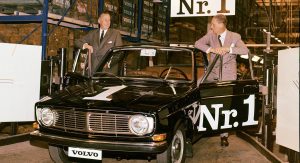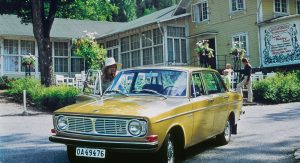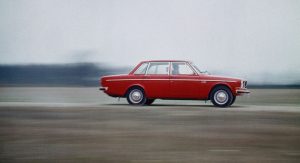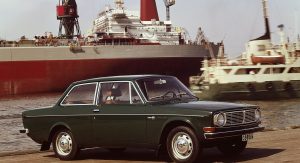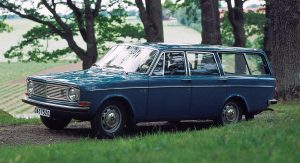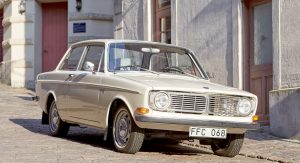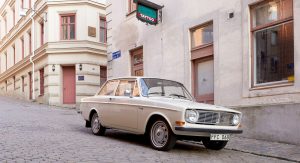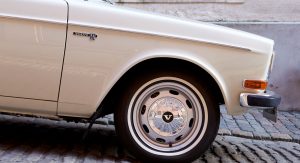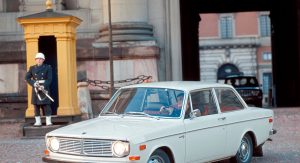Volvo is hardly the largest volume automobile manufacturer in the world, but it has produced a number of models that have gone on to sell in excess of one million units. The first of them was the 140 Series, and that model is now celebrating its 50th anniversary.
The Swedish automaker introduced the 144 on August 17, 1966, at the Lorensberg Hotel in Gothenburg – trying its best to keep it hidden while lifting the show car by crane while the city was on high alert as a manhunt for two cop-killers was underway and the adjacent theater was being evacuated.
The event proceeded all the same, along with simultaneous presentations across Scandinavia in Oslo, Copenhagen and Helsinki. Production kicked off just two days after its presentation. The 142 coupe followed in 1967, the 145 wagon in ’68, and the 145 Express van in ’70. What started with a 1.8-liter inline-four rated at 75 horsepower ultimately received a fuel-injected version good for 120. A six-cylinder version dubbed the 164 launched in 1969 as well.
The 140 Series ended its life-cycle in 1974. But it was such a success that, in just eight short years on the market, Volvo sold 1,251,371 examples around the world, making it the automaker’s first volume player. What’s more is that the closely related 240 that replaced it proved an even bigger success, selling over 2.8 million units before it was phased out in 1993.
To this day, the 240 remains the most successful model in Volvo’s history – but there have been others that have crested the million-unit mark. The 700 Series saw nearly 1.24 million units made from 1982 to 1992. And the 850 Series and its various derivatives netted more than 1.36 million units between 1991 and 2000. All told, Volvo has produced over 19 million vehicles over its 90-year history.
The company is currently producing about half a million vehicles each year, of which the XC90 is the most popular – but currently stands at around 700,000 units made.



